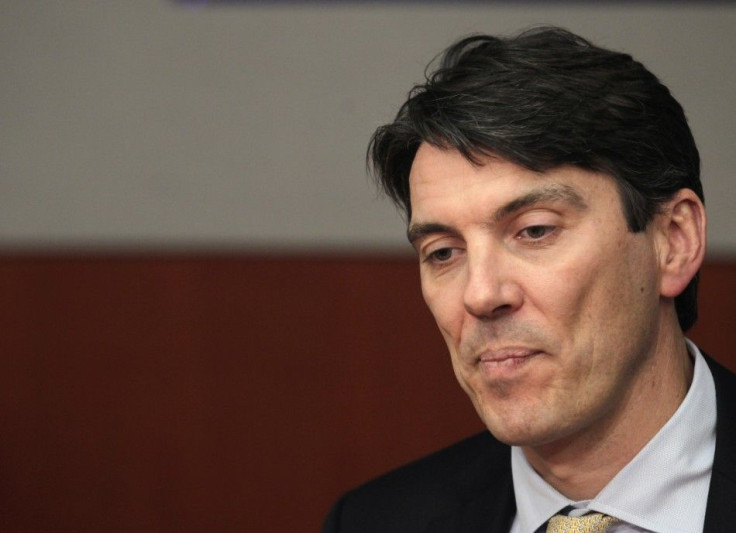Will AOL Ever Rebound?
Analysis

AOL posted worse than expected earnings numbers on Tuesday, begging the question as to whether the former Internet powerhouse will ever regain its footing.
AOL posted a loss of $11.8 million, or 11 cents per share, while analysts were expecting profit of 4 cents per share. The company brought in $542.2 million in revenue.
AOL did see advertising revenue growth for the first time since 2008, but even that missed expectations.
One of the biggest issues AOL faces is its dwindling base of Internet service consumess. Fewer people are paying for its email or Internet services, as dozens of competitors have siphoned off the majority of its market share.
This past quarter, Web-services subscriptions dropped by 23 percent.
The company now largely relies on an older customer base that is -- not to be crude---literally dying off.
CEO Tim Armstrong's answer to the dwindling market share is through news content, specifically the local Patch Web sites and the company's acquisition of Huffington Post. AOL now supports more than 850 hyper local Patch Web sites across the country and recently celebrated the service's one-millionth published article.
But the issue with Patch is that quantity most certainly doesn't equal quality.
AOL has insisted on putting five Web sites in an area that could suffice with one, and that's only a mild exaggeration. Not only is there an oversaturation, but the Patch Web sites must compete against already-established newspapers in a lot of areas.
Do some of the Web sites provide more in-depth coverage than the newspaper counterparts?
Certainly, but the issue is: who is actually reading the content? Who is actually willing to place advertisements with local Patch Web sites?
AOL has benefitted from an older subscription base in one way, but that same benefit hurts products like Patch. Stereotypically or not, many older customers are comfortable with their newspaper or other source of information, and may have never even heard of Patch.
Armstrong's other big content move was to acquire Arianna Huffington's Huffington Post for $315 million. Huffington Post brings in a lot of traffic each month, averaging around 50 million according to Quantcast, but it has yet to provide a major boost in advertising revenue.
Part of that could be, for better or not, the Huffington Post is known as an aggregator and SEO operation, not known for original, hard-hitting journalism. It has recently gone on a bit of a hiring binge, but it's very hard to change a deep-seated opinion on something.
Among the most ironic things about Armstrong and his plan for content is that he actually had quite a few strong content producers. AOL Fanhouse, Daily Finance, Politics Daily, among others, were strong producers of good content.
So that, of course, meant Armstrong either sold or completely gutted all of the operations. He essentially sold the traffic and name, minus the writers, of Fanhouse to Sporting News for $30 million. AOL laid off large portions of the well-producing Daily Finance and Politics Daily pages, which now operate on skeleton crews.
Armstrong ditched quality journalistic products for a lot of small Web sites that rely on search engine optimization to get traffic, but make no real impact. The AOL CEO clearly never understood the phrase, "Content is king," because it didn't mean quantity of content.
One could label journalists as biased for ripping Armstrong's aforementioned decisions, but journalists aren't the only ones pessimistic on the company's future.
Investors have also been down on AOL and have dumped the stock in large portions.
From a technical perspective, AOL has exhibited a bearish pattern for the better part of a year. Basically, AOL's stock, with few exceptions, has been below its 50-day moving average for nine months -- a bearish technical pattern.
It's down about 50 percent since December 2010, to about $12 on Tuesday, and shows almost no signs of reversing the trend.
AOL had to do something in order to deal with all of the financial losses from its partnership with TimeWarner and loss of Web subscribers -- but this wasn't it.
Armstrong has an interesting idea on putting an emphasis on content, especially given the way newspapers have struggled over the past decade, but he should have put it on good content not just quantity content.
Because unless stories on lost cats suddenly become groundbreaking, Patch isn't going to bring AOL back from the dead.
Nothing might at this point.
© Copyright IBTimes 2024. All rights reserved.











